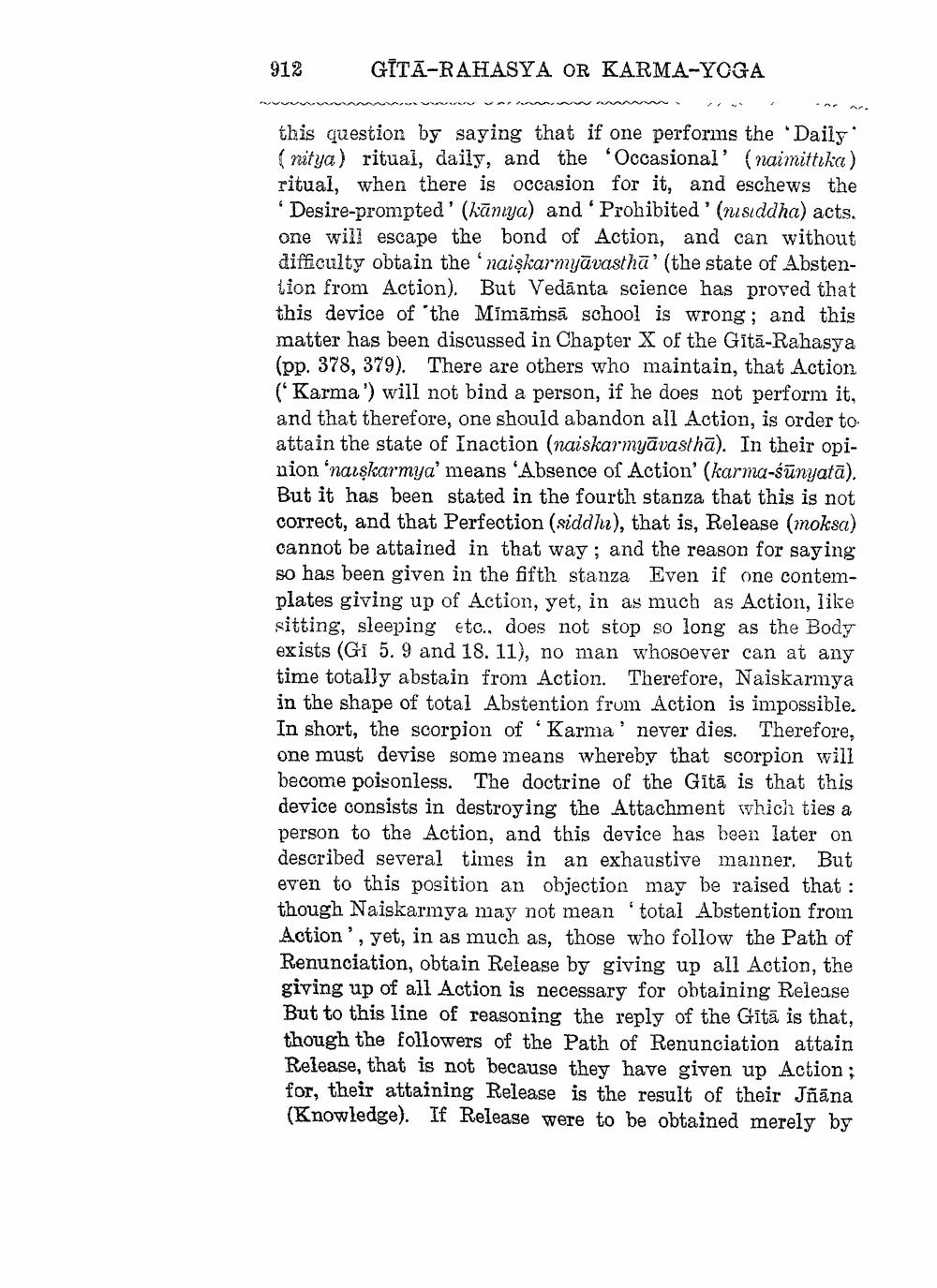________________
912
GITĀ-RAHASYA OR KARMA-YOGA
this question by saying that if one performs the Daily ( nitya) ritual, daily, and the 'Occasional' (naimittika) ritual, when there is occasion for it, and eschews the
Desire-prompted' (kānıya) and 'Prohibited' (nusiddha) acts, one will escape the bond of Action, and can without difficulty obtain the 'naişkarmyāvasthā' (the state of Abstenlion from Action). But Vedānta science has proved that this device of the Mimāṁsā school is wrong; and this matter has been discussed in Chapter X of the Gītā-Rahasya (pp. 378, 379). There are others who maintain, that Action ( Karma') will not bind a person, if he does not perform it, and that therefore, one should abandon all Action, is order to attain the state of Inaction (naiskarmyāvasthā). In their opinion 'narşkarmya' means 'Absence of Action' (karma-śūnyatā). But it has been stated in the fourth stanza that this is not correct, and that Perfection (siddha), that is, Release (moksa) cannot be attained in that way; and the reason for saying so has been given in the fifth stanza Even if one contemplates giving up of Action, yet, in as much as Action, like sitting, sleeping etc., does not stop so long as the Body exists (Gi 5. 9 and 18. 11), no man whosoever can at any time totally abstain from Action. Therefore, Naiskarmya in the shape of total Abstention from Action is impossible. In short, the scorpion of 'Karma' never dies. Therefore, one must devise some means whereby that scorpion will become poisonless. The doctrine of the Gītā is that this device consists in destroying the Attachment which ties a person to the Action, and this device has been later on described several times in an exhaustive manner. But even to this position an objection may be raised that : though Naiskarmya may not mean total Abstention from Action', yet, in as much as, those who follow the Path of Renunciation, obtain Release by giving up all Action, the giving up of all Action is necessary for obtaining Release But to this line of reasoning the reply of the Gita is that, though the followers of the Path of Renunciation attain Release, that is not because they have given up Action ; for, their attaining Release is the result of their Jñana (Knowledge). If Release were to be obtained merely by




